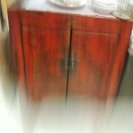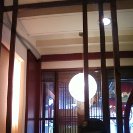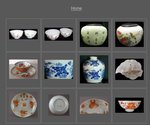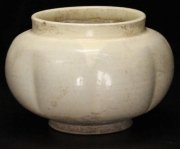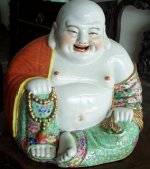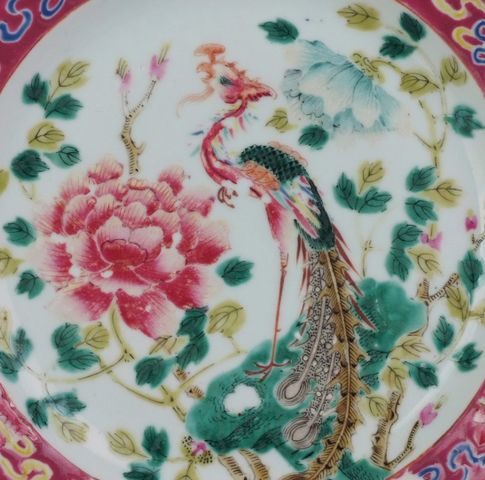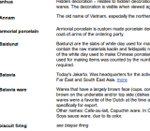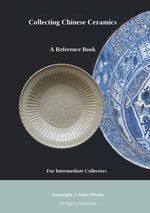-
Porcelain marks and potter's marks on Chinese ceramics
- Porcelain marks and potter'smarks on Chinese ceramics
- Antique Porcelain Marks and Pottery Marks
- Antique porcelain marks and pottery marks on Chinese ceramics
- Iridescence of ceramics
- Iridescence in Chinese ceramics, toxic contents of early and later glazes
- Antique Porcelain Authentication and Identification
- Antique porcelain authentication and identification of Chinese ceramics
- Identifying Chinese Porcelain and Ceramics
- Identifying Chinese porcelain and ceramics, and their possible age
- Antique Appraisal and Appraisers Service
- Antique appraisals or valuations can help the collector with new information on his collectibles
- Value of Antiques - perceived antique china value
- Value of antiques, or how the perceived antique china value is affected by various factors like selling venues, condition, rarity, demand
- Chinese 60 Year Cyclic Calendar - the sexagenary calendar
- The Chinese cyclic calendar used most on dated ceramics is the 60 year cyclic calendar
- Chinese History Timeline - Chronology of China History
- Chinese history timeline, a chronology of China history
- Chinese Emperors -- Chinese dynasties the Ming Dynasty and Qing Dynasty
- Chinese emperors, the Chinese dynasties of the Ming and Qing dynasty and their emperors
- Antique Porcelain Reproductions
- Antique porcelain reproductions and fakes of antique Chinese ceramics made in China
- Fake antique porcelain and other fake antiques
- What you must know about fake antique porcelain from China. Fake antiques are flooding the antique markets
- Porcelain Age Faking Methods
- What you must know about porcelain age faking methods of china, and how to avoid buying a fake
- European Porcelain Copies of Chinese Decorations - Chinoiserie
- Chinoiserie - European porcelain copies of Chinese decorations
- Buying Antique Porcelain
- Buying antique porcelain made in China requires some prior research to avoid buying fake porcelain
- Antique Chinese Porcelain - Buying Tips
- Guide to antique Chinese porcelain buying - what to consider when purchasing china and glazed pottery
- Buying Fake Antiques and the Buyer's Attitude
- Buying fake antiques - fakes from China are flooding the world's antique markets
- Introduction to Collecting Chinese Porcelain - Ebook
- Introduction to Collecting Chinese Porcelain - Ebook Guide for Collectors of Chinese Pocelain
- Porcelain Collections Around the World
- Major Chinese Porcelain Collections of the World, in the East and West
- Porcelain Care & Cleaning
- Porcelain care and cleaning tips
- Porcelain Repair and Restoration
- Porcelain repair or china repair is more than just sticking broken pieces together
- Proper Packaging for Shipping Porcelain
- Shipping porcelain requires proper packaging
- Chinese tea culture and tea wares, Yixing tea wares
- Chinese tea culture - tea preparation and social interaction
- Chinese Calendar and Imperial Year Notation
- Chinese calendar and traditional year notation - calendars of old, the imperial year and 60-year cyclic calendar
- Chinese zodiac calendar and its zodiac signs
- The most famous kilns of the Song dynasty
- Chinese Art and Craft Motifs
- Art and craft motifs used in Chinese porcelain decoration
- Chinese Antiques Porcelain Marks and Other Markings
- Chinese antiques porcelain marks and pottery marks
- Dated Porcelain
- Dated porcelain is mostly having its source in the later 19th century
- Pottery and Porcelain - China Porcelain and Old Time Pottery
- Pottery and porcelain of China -- the difference between old time pottery and porcelain
- Handling Ceramics Safely
- Handling ceramics safely and tips for holding china porcelain
- Scientific authentication of antique Chinese ceramics
- Scientific authentication of antique Chinese ceramics using spectrometry and thermoluminescence dating
- Decoration Types of Chinese Ceramics
- Types of Porcelain Decorations - Ming and Qing dynasties
- Buying Antiques Online
- Buying Antiques Online, online auctions, antique buying online, customs duty
- Swatow wares - controversy of their origin
- Zhangzhou and the controversy of the origin and name of Swatow wares
- Blue pigments used in Chinese porcelain - Sumali, Sunibo
- Blue pigments used in Chinese porcelain - Sumali, Mohammedan blue, Sunibo, domestic mined pigments
- Chinese Export Porcelain and Decorative Styles
- Chinese export porcelain and other decoration styles
- Chinese Language Reign Names
- Chinese language reign names of the Ming and Qing dynasty emperors
- Baba Nyonya Peranakan Porcelain of the Straits Chinese
- Nyonya or Peranakan porcelain, thecolorful Straits Chinese porcelain
- Kraak Porcelain
- Kraak porcelain is a pattern exported to Europe in the Ming dynasty
- Chinese Imari Porcelain
- Chinese Imari Porcelain - what is it? A china pattern from the early Qing dynasty
- Antique dishes - Chinese dishes and plates
- Antique dishes - visible age characteristics on antique plates and dishes
- Antique China or Antique Porcelain
- Antique china or antique porcelain? Both mean the same in English speaking areas
- Antique China Patterns made for export and use in China
- Antique china patterns on export porcelain and other patterns of chinese ceramics
- Shipwreck Ceramics and the Ancient China Trade
- Ancient shipwreck ceramics explain trading relations in Southeast Asia
- Imperial quality porcelain and imperial ceramics
- The difference between imperial quality porcelain and imperial porcelain
- Ceramics Packaging - How NOT to do it
- Ceramics Packaging - How not to do it . Avoid improper packaging of china
- International Trading of Porcelain- Buying and Selling Abroad
- International trading, buying and selling of porcelain and other antiques abroad
- Yuan Dynasty Ceramics and Shufu porcelain
- Yuan dynasty ceramics and porcelain when China was under Mongol rule, Shufu porcelain, first underglaze blue ceramics, blue and white preference of the Mongols
- Thermoluminescence Dating of Chinese Ceramics - TL Dating
- Thermoluminescence Dating of Chinese Ceramics - TL Dating theory
- Laser Ablation Spectrometry of Chinese ceramics - spectre analysis
- Laser ablation spectrometry or spectrometric analysis is used for authentication of Chinese antique ceramics. It allows to identify a large number of elements contained in ceramics
- Yixing Pottery and Tea Wares
- Yixing pottery or zisha clay used in tea wares, teapots, cups, jars and tea trays zhusha clay, etc.
- Antique China Categories - Collectible Porcelain Types
- Antique china categories - Chinese porcelain types suitable for collecting
- Chinese Porcelain Making
- The process of Chinese porcelain making in pictures
- Jingdezhen - porcelain metropolis of China
- Jingdezhen, the porcelain porcelain of China has a history of over a thousand years
- Chinese Porcelain Figurines
- Chinese porcelain figurines and their use in China's culture
- China export restrictions of cultural objects
- China export restrictions on cultural objects and antique art and crafts
- Batavia and Batavia ware
- Batavia was the headquarters of the Dutch Eastindia Company (VOC) in Asia. All Dutch trade was running through this port, whether regional or to Europe. Batavia ware is a porcelain decoration
- Eight Friends of Zhushan
- Eight Friends of Zhushan - a group of famous porcelain painters of China, from the 19th to the 20th century
- Qianjiang porcelain - porcelain painting style in an old tradition
- Qianjiang porcelain - a new life in an old tradition. Classical paintings on porcelain
- Other Sites Worth Visiting
- Other sites worth visiting, related to ceramics, antiques or Chinese culture
- About
- Chinese Antiques - a different view
- Contact us
- contact page for chinese antique porcelain com
- Antiques Roadshow
- Antiques Roadshow, antiques and popular entertainment. Watch the Antiques Roadshow in China online
- Chinese Porcelain Marks and Antique Pottery Marks
- Identifyng Chinese porcelain marks and antique pottery marks on antique porcelain. A selection of Ming, Qing and early republic antique marks
- Chinese Symbolism in Arts and Crafts
- Chinese symbolism in the traditional arts and crafts
- China Antiques Search - site search by keyword
- China antiques search - site search by keyword
- Zheng He and the largest trading fleet ever on earth
- Zheng He and the largest trading fleet the world ever saw -during the reign of Ming emperor Yongle
- Chinese holidays and the Chinese Calendar
- Chinese holidays and the Chinese calendar in traditional society
- Jian wares - Tenmoku tea bowls and hare's fur bowls
- Jian wares -Tenmoku tea bowls and hare's fur bowls
- Antique China Marks (a comparison)
- Antique china marks and their use for identification and dating - a comparison
- Packing China Properly
- Packing china and ceramics properly
- Porcelain Packaging - avoiding the worst
- Porcelain packaging - avoid the worst from happening
- Detecting Age Faking - How to detect some faking methods
- Detecting Age Faking - details to some faking methods
- Post Parcels and Customs Duty for Antiques
- Post parcels and customs duty - proper declaration and no import tax
- Antiques Value - China Antique Value of Chinese Ceramics
- China antiques value. How to find the antique value of ceramics and antique china
- Chatter marks on Chinese porcelain from the Ming dynasty
- Chatter marks are mainly found on Chinese porcelain from the Ming dynasty
- Collectable or not -- What to collect or not to collect
- Collectable or not -- Discerning what to collect and what not to collect, chamber pots, spitoons, epitaphs, funeral ware
- Exceptional Reign Marks - Late Qing Dynasty and Republic
- Exceptional reign marks from the end of Qing dynasty and early republic
- Identifying Antiques -- recognizing antique Chinese porcelain
- Identifying antiques - tips for novice collectors - How to learn identifying Chinese porcelain and pottery
- Ming ban - the sea prohibition and piracy
- The Ming ban - Chinese pirates and the Ming sea prohibition
- Antique valuation of chinese porcelain
- Antique valuation of chinese antique porcelain
- Antique identification - Chinese antique ceramics
- Antique identification or valuation of Chinese antique ceramics
- Tea Drinking in China
- Tea drinking in China - a social habit
- Gallery of Chinese Ceramics
- Gallery of Chinese Ceramics (associated gallery)
Collecting Antique Chinese Porcelain
This site provides an introduction to collecting antique Chinese porcelain and ceramics. It also contains useful information and tips for collecting Chinese antiques in general.
Establishing a collection of Chinese porcelain requires not only antiques related knowledge, it makes it also necessary to learn a lot of peripheral things as, for example, the ability to recognize fakes. This is especially true due to widespread faking of Chinese antiques. This site provides basic information on genuine and fake ceramic antiques from China. It should enable the prospective collector to make more informed decisions in view to Chinese antiques.
|
Actually, the better we understand the issues involved the more we realize how much more knowledge antique Chinese porcelain requires. Experienced collectors of Chinese ceramics are often specialized in the ceramics of a limited number of dynasties, or to certain types. Due to the vast space and time in which Chinese ceramics were produced, there is no expert who knows all about Chinese porcelain. |
These pages provide tips and information for the beginning collector of antique porcelain made in China in the distant past. They also provide collectors with some information regarding the identification of Chinese characters found in antique porcelain marks.
Today authenticity and dating problems associated with Chinese ceramics are more acute than ever. This is not only valid for the new collector, even long-term experienced collectors and dealers buying or selling porcelain and pottery from China require knowledge not only for dating or identifying authentic antiques, some knowledge regarding to fakes is also important. This site provides information for both, new and the experienced collectors.
Some light will also be shed on Chinese commercial practices in comparison to western purchasing attitudes, and why fakes are proliferating.
First things first:
What do we define as 'antique' Chinese porcelain?
This site concerns only 'antique' porcelain. Vintage or other 20th century items are not included. Our definition of antique Chinese porcelain follows to some extent customary practice here, where we live:
(1) An antique must show porcelain age signs.
(2) It must originate either in the early republic, Qing or Ming dynasties, or even earlier.
The question is what is considered "early republic" period? We usually consider anything made after the Qing dynasty (1644-1911) during the 1910s or 20s as early republic, and it ends in the early 1930s. Anything produced later might be qualified as "vintage". During the early republic period many styles and techniques employed were still congruent with those of the Qing dynasty.
The early 20th century is the time when the classic Chinese production and decoration techniques began to change and new influences from abroad started to enter these.
The content of this site concerns only hand-painted porcelain. Printed porcelain or transfer wares are not included. Please be aware that some later polychrome wares can contain both,that is some were partially transfer printed and then colors added by hand-painting.
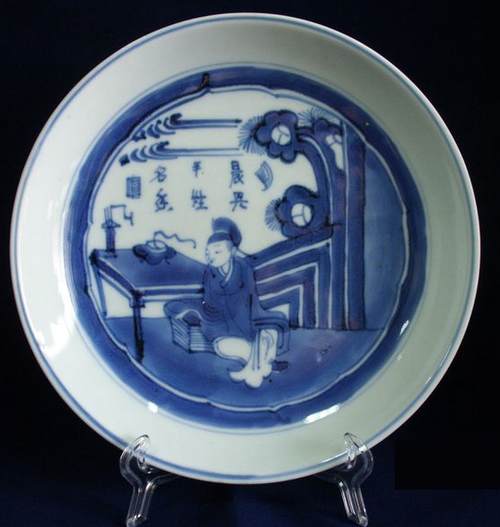
Range of this
site
As mentioned above this site concerns primarily antique porcelain. The information you find here is neither related to vintage nor more recent Chinese porcelain.
All information relates to antiques from imperial times up to around the early 1930s). This is also valid for marks, etc.
|
This site follows the Chinese habit of classifying antique porcelain according to the type or style of the decoration - as the last dynasty ended the old porcelain decoration methods continued to be used for a considerable time. Antique Chinese porcelain made during the early republic period frequently shows similar traits as that made during imperial times. This is the main reason that early republic items are classified as antiques, in addition to their age. |
|
Differences between Chinese porcelain and other Chinese ceramics
It can be a bit difficult to understand the difference between porcelain and other ceramics in the case of Chinese ceramics. This is especially the case in the country and language where porcelain was first produced. Chinese collectors frequently all types of glazed ceramics are called "porcelain" by Chinese collectors, even when they would be classified as something else abroad.
The Chinese language and culture usually differentiates only between porcelain and earthenware. Stoneware, for example, is a concept introduced only in more recent times from abroad. Its concept is hardly known in China. Originally, there did not even exist a character for this type of ware in the Chinese language. Thus, more often than not what is called 'stoneware' in the west is just called 'porcelain' in Chinese.
Click here to see a definition.
Marks Identification
Don't try identifying antique Chinese porcelain via the mark!
If you are new to Chinese antiques and are here to identify some items via their marks, then do yourself a favour and read the mark comparison page first. Marks on antique Chinese porcelain served a completely different purpose than the marks of Europe. They were not used as trademarks or logos which would allow identification of the manufacturer or age, normally.
Therefore, it is generally futile trying to date or find the source of an item via the mark. This would only be possible with non-antique Chinese porcelain made later in the 20th century, or with Qianjiang porcelain, a type that was sometimes signed by porcelain painters, but which was made only from the later part of the 19th century.
Age and dating
methods
The western method of dating antique Chinese porcelain by centuries has been adopted here, but it has some disadvantages when attributing age to Chinese antiques. Here, for the sake of simplicity, the periods or eras mentioned in this site for ceramic age follow mostly the imperial or reign year method. The single periods of these are given in the tables of the Ming and Qing emperor, linked on each page.
(Please see the navigation menu on the left for Chinese dating.)
Chinese porcelain - an overview
Production of Chinese Porcelain was always influenced by China's economy and the trends of overseas markets, respectively.
During the Song, Yuan and early Ming dynasties (10th - 16th centuries) much if not most of porcelain production was export oriented. But, domestically used porcelain was basically the same as that which was exported. Only from the 16th century, in the late Ming dynasty, some porcelain started to be designed and produced specifically for overseas markets. Then, in the Qing dynasty some Chinese porcelain styles and types were exclusively made for export and were not used in China itself.
Read more
................................................. ...............................................
................................................. ...............................................
|
For any unknown terms, please refer to the Glossaries of antique Chinese porcelain terms. |
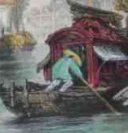 |
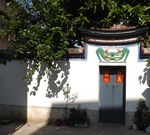 |
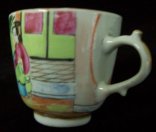 |
 |
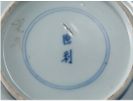 |
 |
Access more information
- Porcelain age signs as seen in Chinese ceramics
- Porcelain age signs indicative of the age of china porcelain and ceramics
- Pottery Marks on Chinese Ceramics
- Early pottery marks on earthenware and porcelain
- Novice Collector of Chinese Porcelain
- Tips for the novice collector of Chinese porcelain
- Chinese zodiac signs
- Chinese zodiac signs in different cultures - why their names differ
Date Last Updated: July 19, 2024
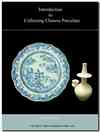 Ebook Introduction to Chinese Porcelain |
NEW!
Reference book for intermediate level collectors
Popular farmers ...
